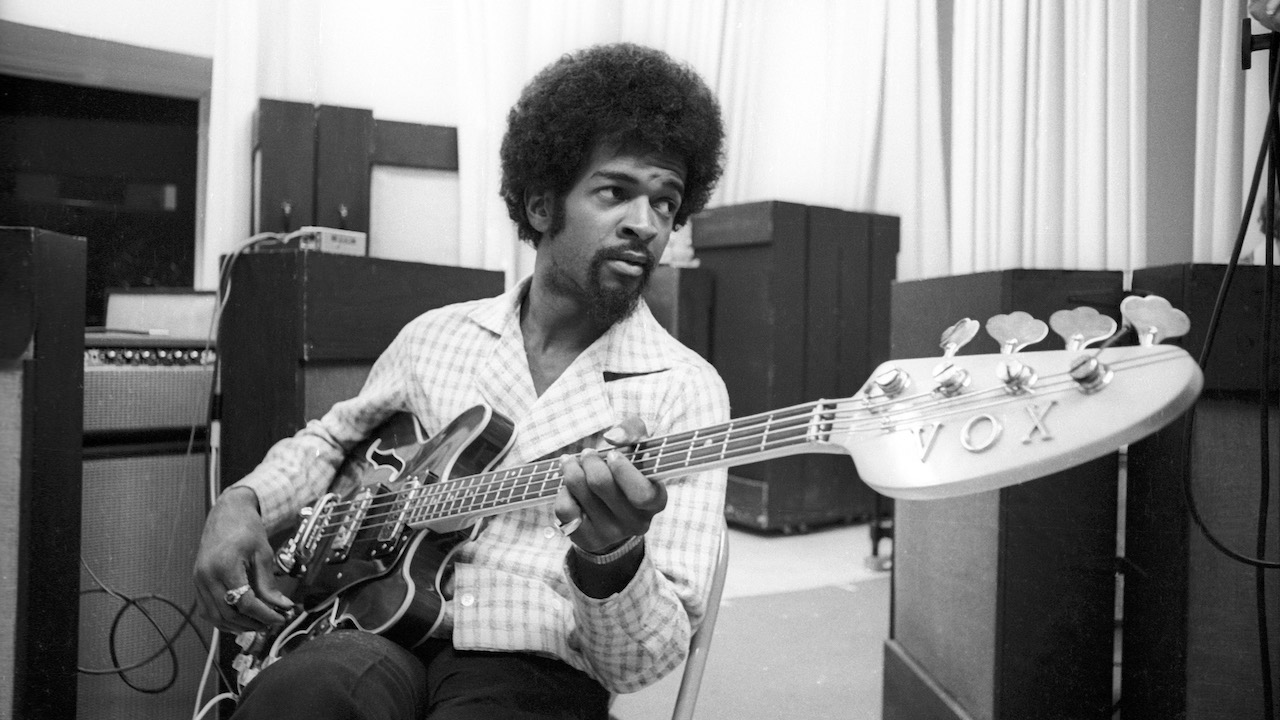“I came up with slap bass out of necessity. I was basically trying to play drums on the bass”: Larry Graham recounts the birth of “thumpin’ and pluckin’”
Few bassists can stake a claim to inventing slap bass more than Sly and the Family Stone’s Larry Graham

By the time the bass guitar came along in 1951, upright bass players had been slapping and pulling on their strings for several decades. Milt Hinton was one such player who pioneered a percussive technique that involved pulling on the strings, and slapping ghost notes with both the top and bottom of his palm.
The technique didn’t make the jump to the electric bass guitar until the late ‘60s. When it did, it was thanks to a young bass player from Texas named Larry Graham. Born into a musical family, Graham was playing organ pedals and guitar in his mother's working band by the time he was in his teens.
History was inadvertently made when the organ was damaged, and the band's drummer left. With no drummer to provide rhythmic backing and no organ to provide the low-end, Graham switched to the bass.
Before long he began slapping the lower strings percussively with his thumb, and pulling on the higher strings in an attempt to create kick drum and snare-like rhythmic patterns.
“Everybody was playing overhand style – fingers over the top of the bass,” Graham told Bass Player.
“That's cool, but I wasn't interested in learning the so-called correct way of playing, because I wasn't planning to be a bass player. I came up with my own style out of the necessity of not having a drummer. I was basically trying to play drums on the bass.”
His efforts were successful enough to keep the band working, and before long captured the interest of Sly Stone. Upon seeing the band, Stone immediately recruited the young bass player into his new group, Sly & the Family Stone.
All the latest guitar news, interviews, lessons, reviews, deals and more, direct to your inbox!
When Sly hit the big time in 1968 with the release of the hit single Dance To The Music, Graham and his revolutionary playing style were catapulted into the spotlight, and the world was introduced to slap and pop.
“Having not worked with a drummer when playing with my mother, when I eventually worked with Greg Errico in Sly & The Family Stone, it was either going to work and be totally cool or it would be a train wreck – I didn't know which.
“Greg, being the drummer he is, totally played around what I was already doing: he didn't ask me to lighten up, it was just very natural.”
The Family Stone also broke new ground for having a racially integrated band made up of black and white musicians all having prominent roles behind the free thinking Sly Stone.
“Part of the genius of Sly is that he allowed us to be ourselves. Greg’s drum part in Dance To The Music came from Greg's heart. If someone had changed it, nobody could play like Greg, so you'd miss out on something.”
“No one played guitar like Freddie Stone, either – so allowing me to play how I played meant he created a greater sound, and that he was getting the best part from each one of us.”
Through his work with Sly & The Family Stone, and later his own group Graham Central Station, Larry inspired bassists all over the world to put thumb to string.
Songs such as Hair, Thank You (Falettinme Be Mice FIf Agin), Can You Handle It? Release Yourself and The Jam are all Larry Graham classics and required listening for anyone serious about learning slap bass.
“It feels good that thumpin' and pluckin' is now part of blues, rock, country – whatever. You could be listening to a blues band, and suddenly the bass player will go off thumpin' and pluckin when it's the bass solo. It's not just part of funk anymore; it's the way you play bass. And it still gets the crowd going.”

Nick Wells was the Editor of Bass Guitar magazine from 2009 to 2011, before making strides into the world of Artist Relations with Sheldon Dingwall and Dingwall Guitars. He's also the producer of bass-centric documentaries, Walking the Changes and Beneath the Bassline, as well as Production Manager and Artist Liaison for ScottsBassLessons. In his free time, you'll find him jumping around his bedroom to Kool & The Gang while hammering the life out of his P-Bass.


